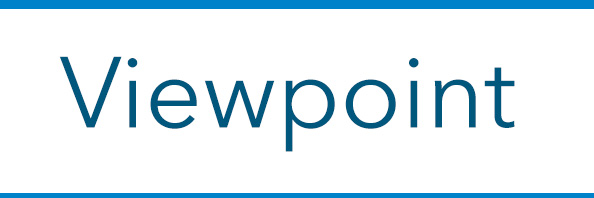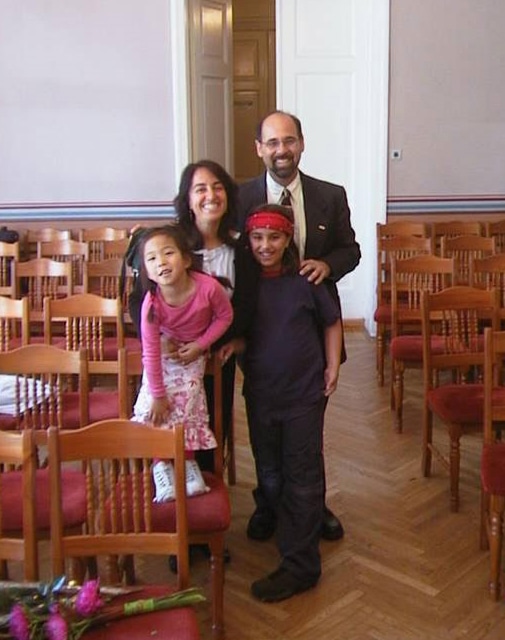The 2024-2025 Fulbright U.S. Scholar competition opened recently. It closes September 15. It was 20 years ago in fall 2003 that I was honored to participate in this program as a community college professor. The experience has greatly benefited me, my family and, most importantly, my students.

The Fulbright Program was founded in 1946. Sen. J. William Fulbright’s objectives in proposing the program were to offer academic exchange to increase world peace and global understanding. Since then, prestigious U.S. institutions such as Harvard, Yale, UC Berkeley and Columbia have produced the most awardees, which has resulted in the view that the program is designed for elite educators.
Though community colleges emerged in the early 20th century, it wasn’t until after World War II with the 1947 President’s Commission on Higher Education that their importance in educating returning GIs, women and those seeking occupational skills was recognized. Since then, community colleges have become a mainstay of higher education, not only in advancing workforce and transfer education, but in promoting international education.

Today, community colleges with their large numbers of international students, students of color and students often neglected by other higher education sectors are no less involved in advancing world peace and understanding than their four-year counterparts. The Community College Research Center reports that 33% of all U.S. undergraduates were enrolled in community colleges – 7 million students – during 2020-21. According to the American Association of Community Colleges, there are 1,043 community colleges in the U.S. A community college is present in nearly every part in the U.S. Their impact on local communities, businesses, and civic life is incomparable.
Recently, the top community colleges receiving Fulbright awards in the scholar program during 2022-23 were announced: a total of 13. This represents a drop from 15 the previous year. And a drop from 29 in 2020-21. I recognize that this drop may be pandemic-related, but still, it is significant.
Every year, the Fulbright Program awards approximately 8,000 grants. Most are to students: 2,000 to U.S. students and 4,000 to foreign students. Some 900 are to visiting foreign scholars. In the Fulbright U.S. Scholar program — which supports American educators teaching and researching overseas — about 800 awards are made annually. It is this program where the vast majority of U.S. higher education faculty participate. The year that I was awarded a grant, eight were given to community college faculty.
Related article: Fulbright scholars prepare for new opportunities
Besides the Fulbright U.S. Scholar program, there are other programs open to community colleges, but all have limitations for faculty. Short-term programs include the Fulbright Specialist Program and the Fulbright-Hays Program. The specialist program demands a level of experience that many community college faculty don’t have. And few of the eligible disciplines listed qualify as career or occupational-focused: fields that dominate community colleges. The Fulbright-Hays Program, administered by the U.S. Department of Education, requires the development of a group project with other educators, often difficult to organize. And the Fulbright International Education Administrators Award is designed for administrators, not faculty.
A pitch for another option
Another option is needed. The Fulbright Program, funded by U.S. taxpayers, is the most prestigious academic exchange program in the world. It is a form of soft diplomacy that sends Americans overseas to share U.S. values while learning about other cultures, which in turn enhances learning for students.
All Americans should be able to access the program. For educators, this cannot be limited to elite or just four-year state and liberal arts institutions. Because of their open enrollment, low tuition, accessibility and diversity, community colleges are “democracy’s colleges.” No sector of higher education represents a wider swath of Americans than community colleges. In this period of deep political and social polarization, community colleges can demonstrate leadership in bridging divides by advancing global and intercultural education.
Challenges for community college faculty
Few community college faculty consider the Fulbright Program (or have ever heard of the program), and those who have suffer through the complexity of not only the application process, but the challenges of obtaining time off from teaching. Most full-time community college faculty teach five courses per semester, compared to those in other sectors who teach much less but are engaged in research.
The ability of community college faculty to participate is hindered not only by the challenges of covering a teaching load but also by obtaining leave. Tenure is often necessary for a sabbatical or leave, not an option for many faculty. They may not feel confident that taking a long period of time (the scholar program is typically for one or two academic semesters) away would not jeopardize their position. As such, institutions often don’t see an easy way to accommodate faculty seeking a Fulbright grant.
A new program is needed that is designed specifically for community college teaching faculty. This program must consider the limitations that faculty face relative to their teaching demands, employment status and the foundational liberal arts and occupational-related subjects they teach.
If the U.S. State Department and its partners are truly interested in democratizing academic exchange and making the Fulbright Program relevant to all communities including rural and less internationally engaged ones, a new program for community college faculty should be created. A new initiative would align with the Biden administration’s Executive Order on advancing diversity, equity, inclusion and accessibility by increasing the impact of the country’s oldest and most prestigious exchange program by leveraging the influence of community college educators.
Related article: Bringing the international experience home to students
A program where faculty could take up to a month off during an academic year (similar in time to short-term programs already available) to teach as a guest lecturer at a foreign institution – maybe offering a short intensive course – would be beneficial to both the community college and the hosting institution. By lasting only a few weeks, the challenges of course coverage would be reduced. And moreover, faculty from occupational fields could be included. New course schedule modalities continue to evolve, and the traditional 15-week semester is increasingly becoming passe. I think many foreign institutions and trade schools would welcome a short course on construction practices in the U.S. (Consider this in relation to the recent earthquakes in Turkey and criticism of building practices.)
By seeing faculty engage in the program, community colleges would reap important benefits including making global connections and the prestige of becoming part of the Fulbright community. The faculty member’s experiences could be a launching pad for global education efforts upon their return. All benefit by getting more community college faculty engaged in international education and particularly in the flagship Fulbright Program. More faculty participating democratizes the program and brings its benefits home to all Americans.





